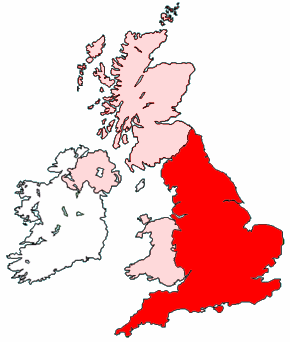With the rise if the English Defence League and other English nationalist movements, those interested in issues of identity, Englishness and the politics of devolution are often reluctant to enter the debate for fear of being associated with these right wing groups, both their ideology and methods.
It was a welcome relief, therefore, to discover this article, reproduced under a Creative Commons Licence from Open Democracy. The Bristol angle is noted in the list of participants.
"Debates about the status of England and surrounding constitution and parliament have gradually gained momentum after 1997 but were (and are) linked to a critical understanding of the way that the union of the United Kingdom functions, or fails to function, as a nation-state. As well as attracting bemusement in recent years, the ‘English Problem’ has been over-shadowed, at least in the mainstream media, by conservative and pro-British assumptions about a narrow, nostalgic and fundamentally ‘ethnic’ England, and has been emptied of all political content.
This Saturday, 6th November, the University of Warwick are hosting a one day interdisciplinary conference entitled ‘Literature of an Independent England’, organized by Dr Michael Gardiner and Dr Claire Westall and supported by Warwick’s Department of English and Comparative Literary Studies and Humanities Research Council.
The conference will draw together academics, writers and commentators working within this burgeoning area to clarify the current position and future potentiality of England as an independent nation and as a nation with an independent literature which as yet has no agreed shape. It will draw on Britain’s imperial history and the postcolonial and nationalist concerns which have sought to address this legacy. It will specifically look at how patterns of cultural, political and literary thought have changed after the ideological fall of the United Kingdom, as well as addressing questions about the form, purpose and future of the British discipline known as English Literature. The conference aims to ask, most importantly, how cultural, literary, and academic producers can become active in shaping the values of a post-British England.
The Keynote Address will be provided by Professor Arthur Aughey (University of Ulster), authors of The Politics of Englishness (MUP, 2007) who will be speaking under the title ‘Citizens of Nowhere? Reflections on a very English Anxiety’. Anthony Barnett will be outlining the need to ‘Take England Back’ and Dr Michael Gardiner will be explicitly linking these political questions to the discipline of English Literature in his paper ‘English Literature as Ideology’. Issues of canonicity within and beyond literature will be explored by Dr Jo Carruthers (University of Bristol) and Dr Simon Featherstone (De Montfort University), author of Englishness (EUP, 2009), will be linking literary regionalism with questions of the nation. Dr Christine Berberich (University of Portsmouth) will be examining the ‘problem’ of England in recent dystopian novels while Dr James Hawes will be reading from his novel Speak for England (2005).
Other speakers and papers will add to the vibrant, interdisciplinary coverage of the day helping to ensure that the political nuances of England’s current political landscape are tired to, and read through, the history of England as a nation typically conflated with the imperially determined state structure of Britain. Key topics for the day include:
- The Politics of England and Englishness
- Nation Theory
- Literary History
- Canonicity and the Disciplinarity of English Literature,
- Empire and Postcolonialism
- England after Devolution
For more information on the programme, speakers and papers please see the conference website."




















